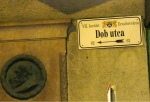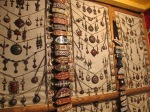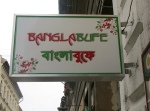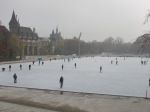We arrived at our abode in Budapest on a shuttle that took us from the southeastern end of the city into its heart, the seventh district of Erzsebetvaros.
It wasn’t hard to tell how the economic and political landscape of this land had changed enormously from when it was blanketed by the Iron Curtain to modern times that have given way to European chain giants like Tesco and Ikea. I glanced at the giant warehouses along the highway and wondered if my homeland, India, would soon look like this. The Indian government is wrestling with whether to allow the establishment of foreign retailers.
Amid shabby, Soviet-style flat towers that house hundreds were remnants of a pre-Communism past — of quaint homes with smallish gardens dulled by winter’s drab.
As the shuttle sped foward, the scenery quickly changed. We were given hints of the grandeur to come in the city center. It was a dreary day, though not as cold as I had expected. I could tell that rain had fallen not too long ago, the dampness fresh on roads, the tram lines slick.
I tried to follow our route on the “Official Budapest City Map,” offered free at the airport, but quickly realized we were outside its realm. The map was crude — just detailed enough for people like us, tourists on a three-day quickie to Hungary’s capital.
Before we knew it, we had sped into the city, rushing by shops and restaurants and even bars doing brisk business at noon on a Sunday. We even passed the “Bangla Bufe,” spelled incorrectly in English but perhaps correctly in Hungarian. In any case, it was right in Bengali. It was tiny and I wondered what had brought Bengalis to Budapest.
I returned there later to find out hours of business but we never managed to get in a meal. Now I will always wonder about how a Bengali restaurant the size of my kitchen does in the heart of Budapest. The restaurant, I learned later, has a website which claims it is the first Bangladeshi eatery in Hungary.
The shuttle dropped us off at the Queen’s Court Hotel and Residences at Number 63, Dob Utca. I had booked the room through Hotwire and was prepared to be surprised — not in a pleasant way. To the contrary. The man behind the desk, who I was sure worked ungodly hours, took loving care of us and when we opened our room, we found a sitting area, a kitchen and a bathroom complete with a washing machine and dryer. I was happy to see the latter after more than a week of travel already in Turkey.
We put our things down and went off to explore, stopping for a bowl of goulash soup at place nearby. I was overjoyed at the good quality of Hungarian red wine and later that night, we stopped at a wine bar, DiVino, which curiously enough is situated across from the Basilica. Ha.
Yes, we did all the tourist stuff in Budapest — walked across the Chain Bridge, took the funicular up to Buda Castle, bought paprika paste at the old market and saw the ice skaters at Heroes Square.
But we also did the unexpected, including eating a lovely meal at Olimpia, a nouvelle Hungarian restaurant an walked around neighborhoods where few foreigners were in sight.
Most amazing of all, perhaps, was the Dohany Street Synagogue, the largest functioning in Europe and the fifth largest in the world. There is also a Jewish Museum and a Holocaust memorial adjacent to the synagogue.
More than 180,000 Jews lived in Budapest, many in Erzsebetvaros. About half perished under the Nazis. Many of those who died in Budapest’s Jewish ghetto are buried in mass graves, now covered with ivy and trees. Today, Budapest has the largest Jewish population in Europe — 80,000. Compare that to Prague, which only has about 3,000 Jews remaining. You will be able to read more about the Holocaust and the Czech Republic in an upcoming post on Terezin.
Budapest won my heart.
It was small yet big. Beautiful yet grimy. Happy yet sad. It was real. Gritty.
There was no shortness of melancholy there. But there was also plenty of joy.
It was the kind of city that beckons the past and looks forward to the future. The kind of city I love.











